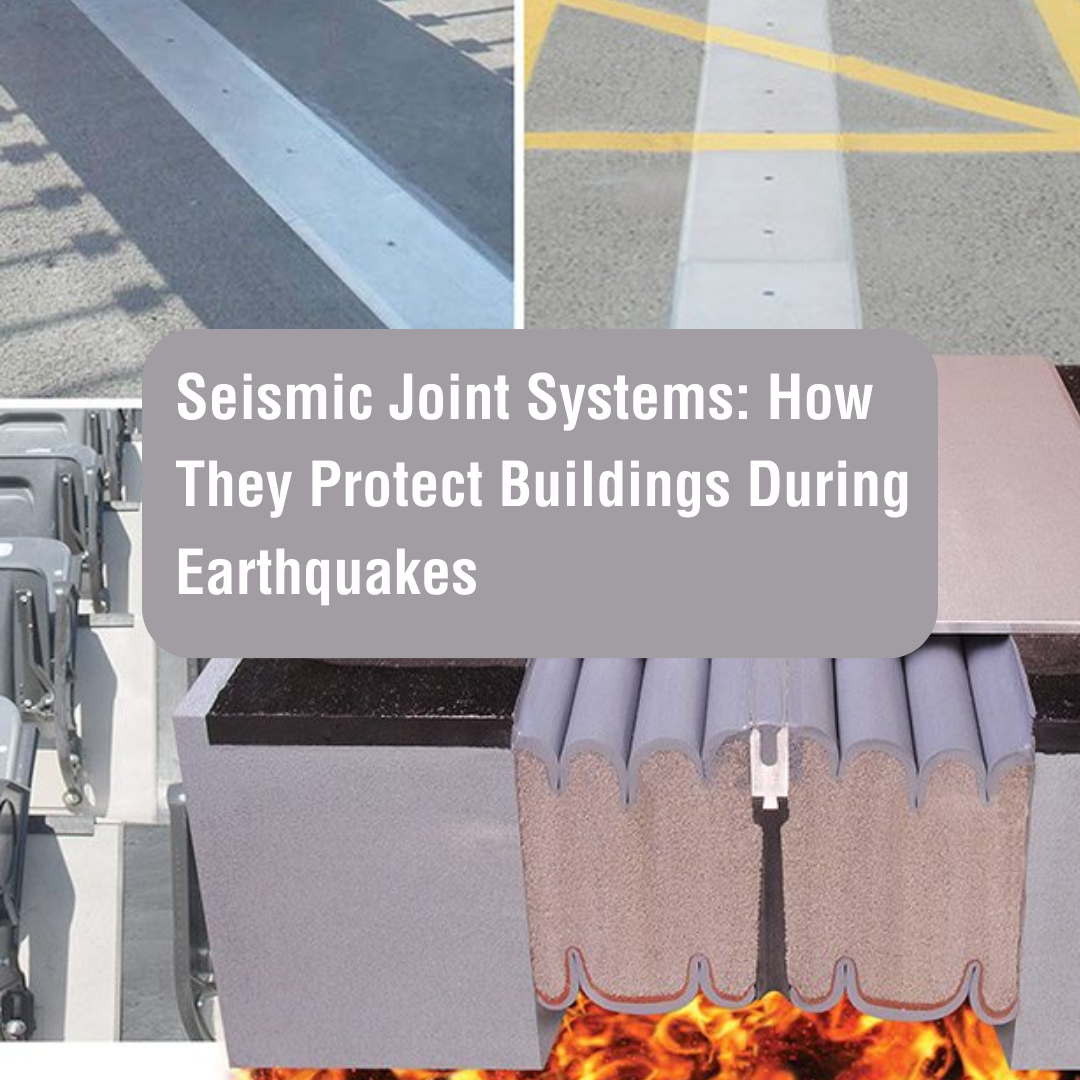Structural Guardians: The Impact of Seismic Joints on Safety
Seismic joints serve as a mechanism to separate two or more sections within the same building and are often necessary between adjacent buildings. Seismic joints naturally occur when one building is constructed adjacent to another, regardless of whether these buildings are functionally connected.
In seismically active areas, prioritizing the safety of buildings is paramount. When structures shake during earthquakes, seismic joint systems emerge as heroes, playing a crucial role in mitigating potential damage.
Seismic joints serve as protective measures for structures, shielding them from potential devastation during earthquakes. These systems offer essential flexibility and movement, enabling buildings to endure the formidable forces generated by seismic activity.
Understanding seismic joint systems
Seismic joint systems are crafted to absorb and evenly distribute the energy generated during an earthquake, efficiently minimizing the impact on the structure.
Seismic joints act as safeguards when both vertical and horizontal movements occur in building components, shielding them from ruptures, cracks, and potential collapse.
Seismic joints function like a sponge, absorbing shockwaves and guaranteeing the stability and integrity of the building.
Seismic joints go beyond protecting structures; they also safeguard human lives. By reducing the likelihood of catastrophic damage, these systems provide peace of mind to those residing or working in seismic zones.
Types of seismic joint systems
The choice of the right seismic joint system is contingent on factors like building type, location, and anticipated seismic activity levels. Consulting with a structural engineer or seismic expert is crucial to identify the most suitable system for a specific project.
Here are some commonly employed varieties:
Expansion Joints
An expansion joint is a deliberate structural gap or separation intended to facilitate controlled movement, expansion, and contraction of materials, commonly found in buildings and bridges.
These joints play a crucial role in accommodating the natural thermal expansion and contraction of materials caused by temperature variations, thus preventing unintended cracks or damage.
Isolation Bearings
Isolation bearings, also referred to as base isolators, are structural components meticulously designed to alleviate the transmission of forces and vibrations between a building or structure and its foundation.
The main objective of isolation bearings is to separate the superstructure (the upper part of the building) from the potentially harmful effects of ground motion, including those induced by earthquakes or vibrations.
Damping Devices
Damping devices are elements or systems incorporated into structures to diminish or dissipate vibrations, oscillations, or other forms of mechanical energy.
Their primary function is to absorb, control, or restrict the amplitude of these movements, thereby improving the stability and safety of structures.
Sliding Joints
Sliding joints, also referred to as sliding connections or sliding systems, are structural elements that facilitate horizontal movement between connected components. These joints are specifically designed to allow sliding or gliding motion along a defined plane, enabling displacement without jeopardizing the overall stability of the structure.
Why seismic joint systems are crucial for building safety.
Seismic joint systems are specialized components installed in buildings to accommodate movement induced by earthquakes.
By facilitating controlled movement and absorbing the energy generated by seismic events, these systems play a crucial role in preventing structural failure and minimizing damage.
Here are some reasons why seismic joint systems are crucial for building safety:
Longevity
Investing in a seismic joint system ensures long-term safety from earthquake damage. These systems are designed to withstand multiple earthquakes, giving you earthquake protection, enhancing the building’s lifespan, and providing a sense of peace and protection.
Flexibility
Flexibility is paramount during earthquakes, as the forces exerted on buildings can lead to collapse. Seismic joint systems provide essential flexibility, enabling buildings to withstand these forces. By accommodating movement, these systems help distribute energy evenly, thereby reducing stress on the structure.
Energy Absorption
Seismic joint systems are specially designed to absorb and dissipate shock and vibrations, effectively preventing damage.
Damage Reduction
Seismic joint systems contribute by minimizing damage through the independent movement of building components. This movement lowers the risk of cracks, ruptures, and collapse, as it prevents the accumulation of stress.
The importance of proper installation and maintenance of seismic joint systems
Prioritizing proper installation, maintenance, and testing is crucial for building owners to maximize the effectiveness of seismic joint systems and ensure the long-term safety of their structures.
This proactive approach not only enhances the resilience of the building during seismic events but also contributes to its overall structural integrity and durability.
Here are some proper installation tips and maintenance tips for seismic joint systems:
Qualified Professionals
The person with the expertise should be the one to handle the task. Installation and design of seismic joints should be carried out by experienced professionals with qualifications in seismic engineering. When professionals handle the installation, it ensures the safety of buildings by ensuring correct installation and meeting the necessary specifications.
Regular Inspection
Regular inspections play a crucial role in maintaining seismic joints. They help identify signs of wear, damage, or malfunction. When these issues are spotted in buildings, timely repairs or replacements can be carried out.
Periodic Testing
Periodic testing, distinct from regular inspections, involves qualified professionals verifying the performance of seismic joints. This process identifies potential deficiencies through industry-standard procedures, ensuring the ongoing effectiveness of the joints.
Proper Maintenance
Maintenance and upkeep are crucial for large structures like buildings. This includes activities such as cleaning, adjustment, and lubrication to ensure the proper functionality of seismic joint systems. Neglecting maintenance can compromise the effectiveness of these systems.

